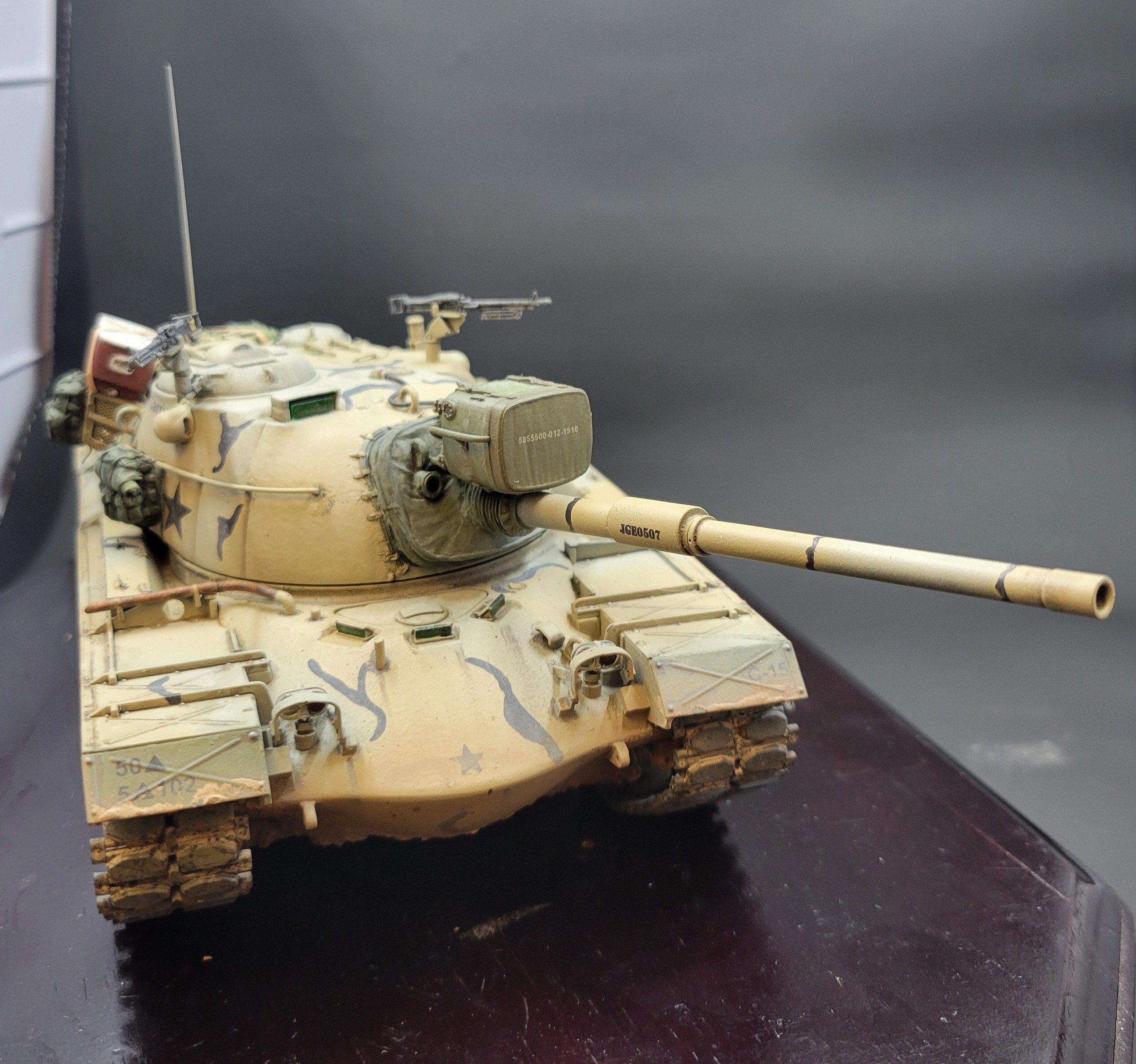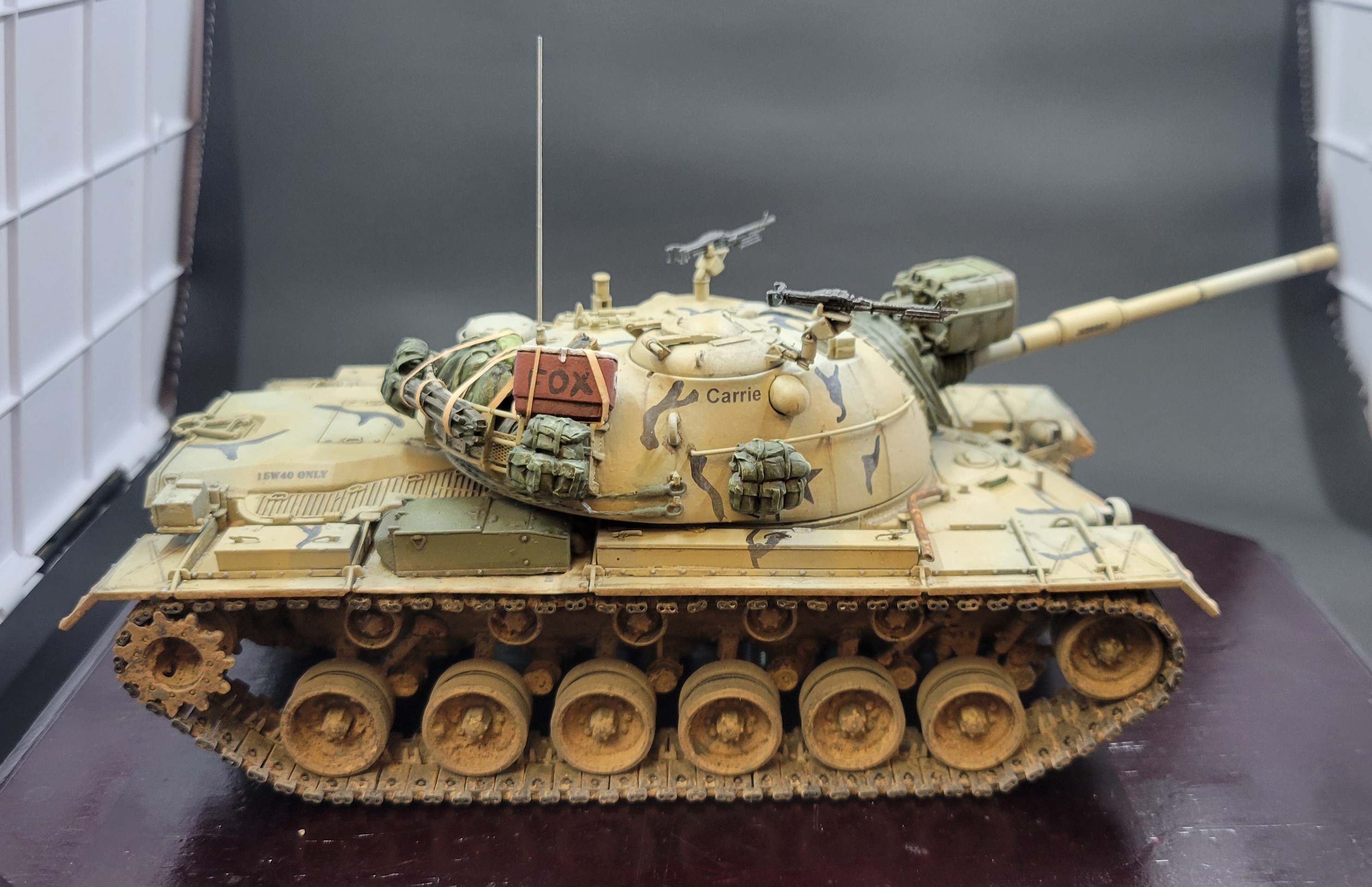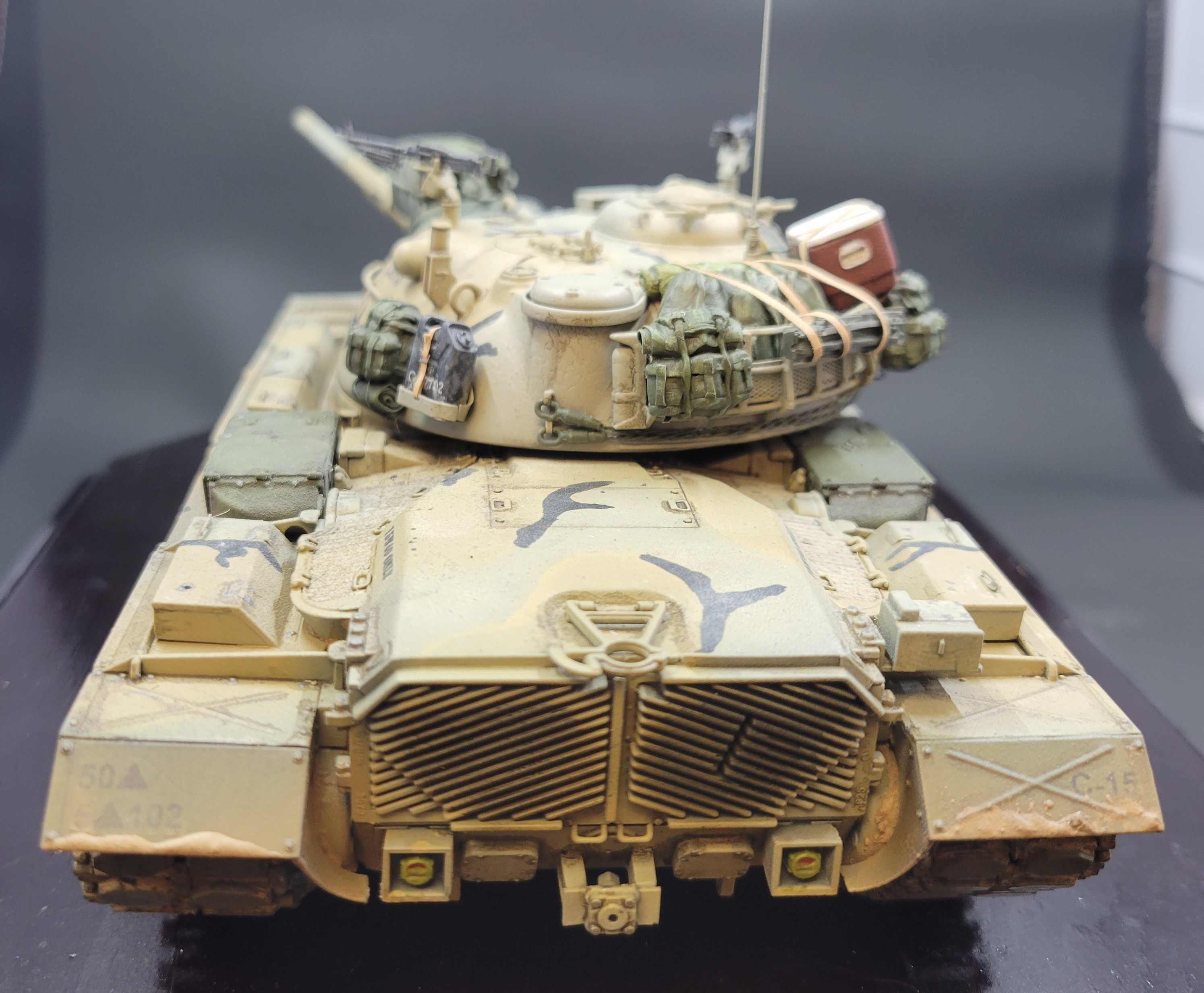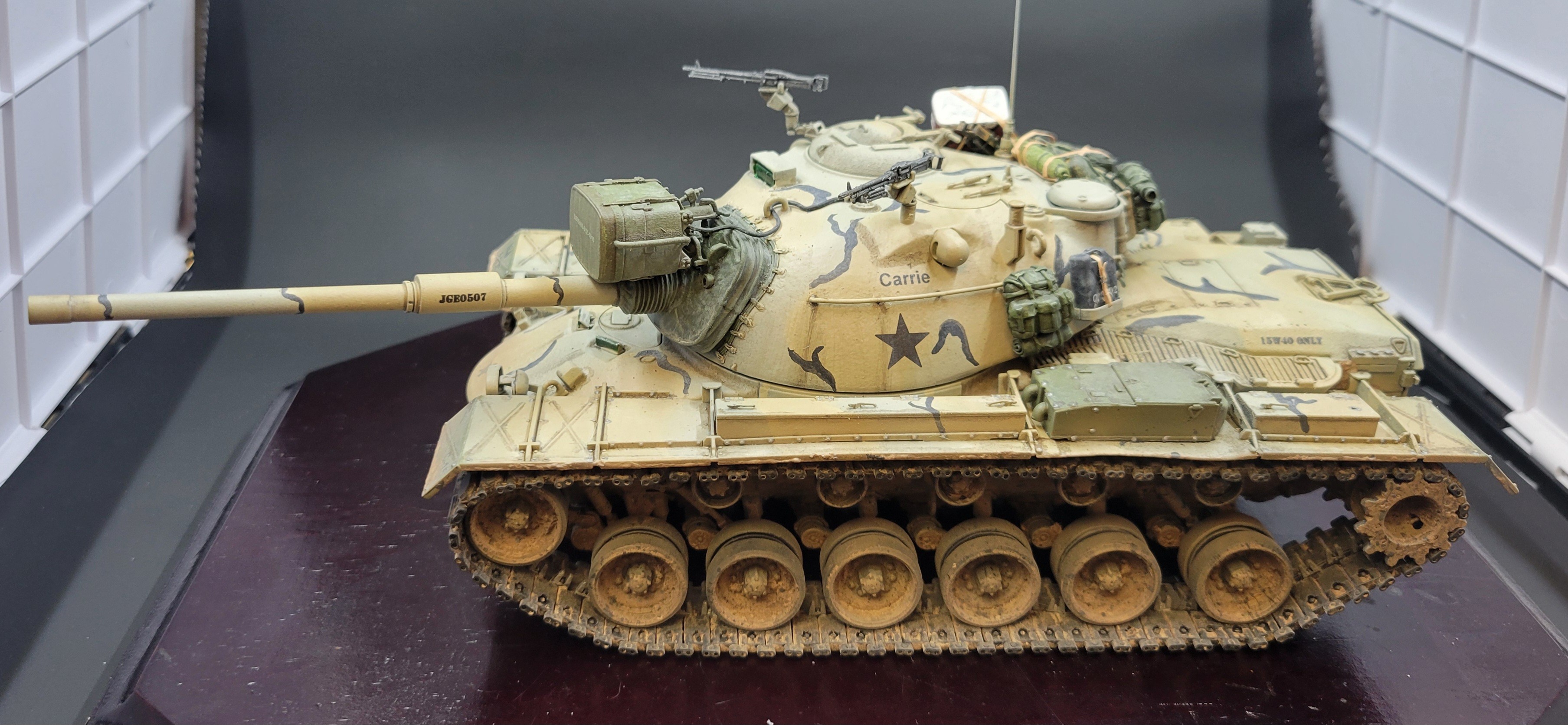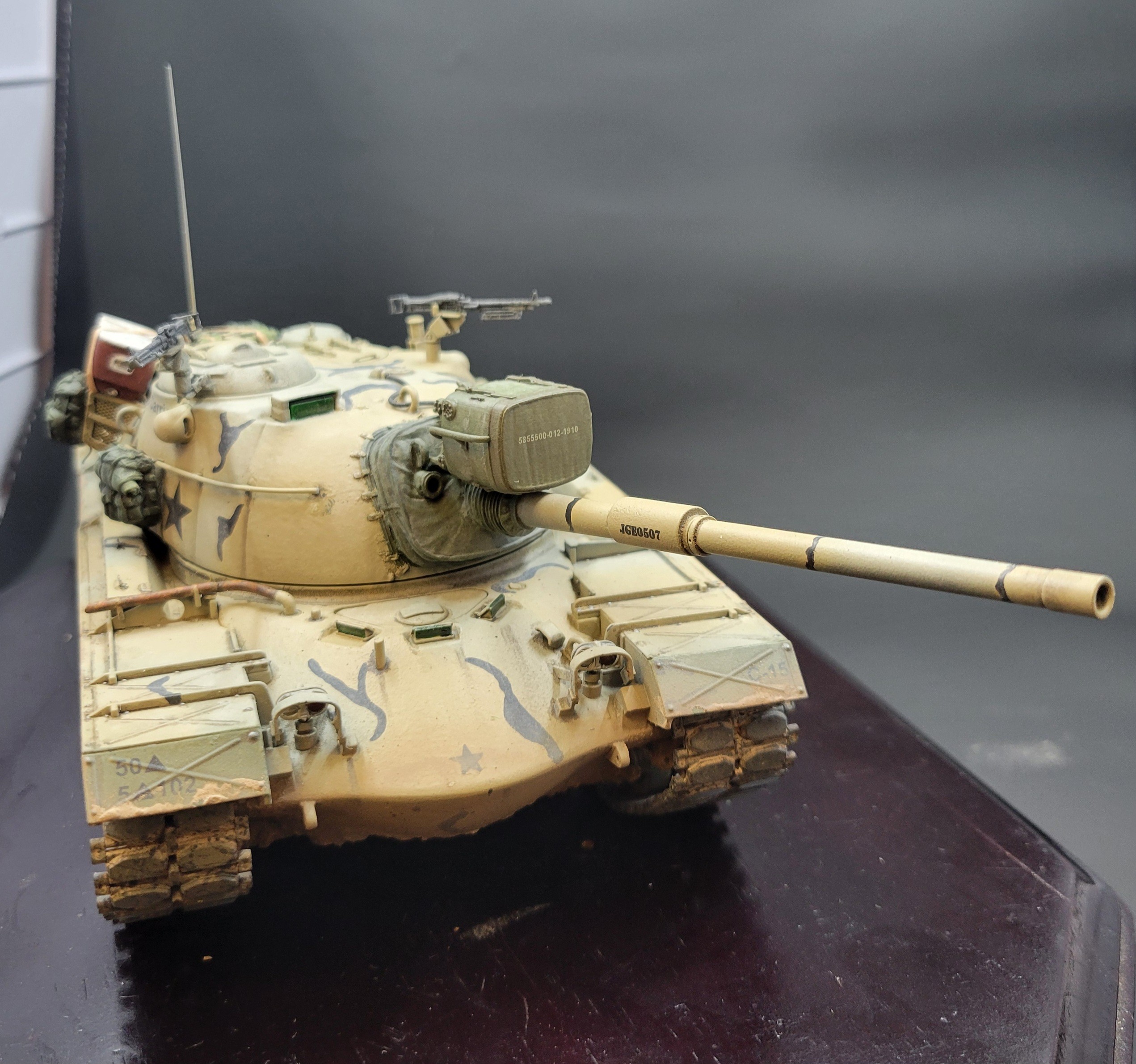NJ National Guard M48A5 ca., 1985
The M48 had a storied history in the U.S. Army. The initial production in 1952 was disastrous, where the Controller General’s report stated, “…they were not acceptable even for training purposes” because of the number of defects in design and production. Over time the bugs were worked out and a decent vehicle was produced. It was not until 1963, and the introduction of the heavily modified M48A3 (with M60 components, most notably the AVDS-1790-2 engine) that a respectable combat vehicle resulted. These vehicles were sent to Vietnam and equipped many Army Reserve and National Guard armored formations through the1960’s and 70’s. A perfect storm afflicted the U.S. military in the 1970’s; the cancellation of the MBT-70project, the significant delays of the M60A2 program, the U.S. military assistance to Israel in the wake of the Yom Kippur War (which drained U.S. tank stocks of M60’s to dangerous levels) and the anti-government/military attitudes in the United States after the Vietnam War. As a low-cost stop-gap arrangement, many M48A3’s were refitted with M60components to bring them up to M60A1 standards. While not quite as well protected as the M60A1, the M48A5 was felt to be a worthwhile alternative. Approximately 2000 M48’s were so converted by the Anniston Tank Depot in Alabama.
I grew up in Northern New Jersey and our National Guard Division was the 50thArmored. “You’re in 50thCountry!” was seen on bumper stickers from time to time (I even had one on my car in High School). And the division was equipped with M48A5’s after a complex re-equipping in the 1970’s (M48A3’s were replaced with M48A1’s, while the A3’s were being rebuilt to A5 standard). In my travels, I met several Guardsmen, who were also modelers, namely Stephen Willoughby, who wrote a great article on the tanks that he and his brother Tom crewed in the 1980’s at Fort Drum, NY. This article provided me with reference material as to the camouflage and markings for the project.
The kit itself is DML’s M48A5 105 mm gun “Smart Kit.” But I wasn’t leaving well enough alone. Since the kit came with DS plastic tracks, I ditched them for a set of AFV Club T-142’s and a new set of drive sprockets from Slingshot models. A DEF models mantlet cover and 105mm barrel and Eduard photo-etched set rounded out the goodies, but there would be more before I was done. The assembly was pretty straightforward, but one thing I would not do again is follow the instructions about cutting the fenders apart and using the M60 fender sections under the armored air filter boxes. I think modifying the boxes to fit the fenders would be a better option. I got the “brilliant” idea in my head of removing all of molded on detail on the stowage bins and replace them with photo-etched parts. It required sanding off the existing details, which required care in order to not to damage the boxes themselves. I marked where the PE parts were supposed to go and began to replace them. I should have waited on the handles as I was constantly knocking them off. This got so bad, that I had to scavenge a set of handles from an M26 PE set. I still didn’t have enough, hence the “missing”one with the hole in the stowage box lid.
The turret required its own special touch, not the least which was it didn’t fit the race in the hull! With some serious prejudice, I opened it up with a Dremel tool until it did. The tie downs by the rear stowage bin were from On-the-Mark models(remember them?). Steve’s article mentioned that the Jerry can rack held a black plastic water bottle, which I swiped from a Legends Models M60/M60A1 detail set. The searchlight was a 3D printed item from James Chang Lee. It was given to me by Bill cross for the project. I used Shapeways 3D printed M60D machine guns with Eduard PE parts to detail up the handles.
Once everything was together, or at least in sub-assemblies, it was time for paint. I primed the model with rattle-can flat black as a primer. The vehicle sat Ft. Drum were hand-me-downs from the CA National Guard and were painted in various versions of MERDC (Mobility Equipment Research and Design Command)desert schemes (either Red or Gray Desert). These schemes mutated over time as materials and personnel allowed during repainting and resulted in a hodge-podge of schemes that were (more or less) sort of the right schemes. The vehicles in my friend’s article named the camouflage patterns as being a combination of Sand and Earth Yellow. Once the Sand was applied, I hand-brushed a thinned pattern of the Earth Yellow to give a hard-edged effect. It was then filled in with my airbrush. I found that the Earth Yellow in my Vallejo set didn’t have much contrast with the Sand, so I added a couple of drops of Field Drab to give it enough contrast to be visible. I added the black “crow’s feet” as some artistic license. The air filters, a couple of road wheels and the searchlight were all painted Forest Green as per the article. The front and rear fenders were also painted Light Green, in accordance with the article. The headlights were painted on the inside and then masking fluid applied over their faces until painting was completed.
When it came to makings, I wanted to make this one my own. For starters, I’m originally from northern NJ, which is 5/102 territory, so I would be using bumper codes to that effect. Also, there were some other rather unique markings on the vehicle, like the “15W40 Only” marking on the engine deck. It would also need a name and since the model was going to be a “C” company vehicle, I named it “Carrie” after one of my cousins. There were also notes in the article about the part number of the searchlight and the unit painting its number on the water can. I made all of the necessary markings, including the black stars on my HP Color Laserjet ProM254dw with a Misee white cartridge to print the white number for the searchlight cover. The model was sealed with a glosscoat, decaled and then resealed with a semi-gloss layer to protect the decals. I used Walthers decal setting solution to snuggle them down.
Weathering was pretty straightforward. I used AK Interactive’s “Wash for DAK vehicles” for the pin wash. I used some sepia oil paint to do the rain-washed dirt streaks on the model. As1985 was both a tactics year and was very rainy, the model was going to need to be muddy. I made up the mud with some thinned down plaster, fine and medium sifted soil and some pigment powder. This was then applied to the lower hull and running gear. Once it had dried, I gave everything wash using AK Interactive\s “Earth” product. The tracks got a thinned version of this.
The external stowage was from a variety of sources. Value Gear made the ALICE packs, as well as the triplet of duffel bags in the bustle rack. I used thinly cut wine foil for the shoulder straps that got looped through the various parts of the tank to secure them. The folded cots were from the Legends set. One item that I felt I needed was a cooler. Def models to the rescue! Unfortunately, the cover was missing from one of them in my set, so I made a new one from sheet styrene and some Eduard PE hinges. The stowage was painted using Vallejo acrylics and weathered with oils. The “Fox” on the cooler needs a bit of explanation, as this kind of an “NJ only” thing. There was a NJNG recruiter named Sergeant Fox who came to my High School once a year looking for Guard candidates and this is kind of a small homage to him. Once I had everything to my liking, I “secured” everything with paper straps dyed with tea water. The antenna was made from gas chromatograph capillary column which is a type of very flexible glass tubing and painted black. Once everything was in place, I mixed up a highly-thinned dust mix (as Ft. Drum is known to be muddy and dusty at the same time), that was about 10:1 lacquer thinner: Tamiya paint and applied that to everything to blend it all together.
And there you have it, a rather unique-looking NJNG M48A5 from Ft. Drum in the mid-1980’s. I’d like to thank Steve and Tom Willoughby for their advice about the vehicles that they crewed. Also, Bill Cross for his constant (incessant?)encouragement during the project that was most welcome. Finally to the entire NJHMA (New Jersey Historical Miniatures) crew, for finding every and all faults as model was being built so I could correct them before things were too far along. You’ll be able to see this model, along with lots of others, in Southbury, CT on 4-5 OCT 2024 at the annual AMPS regional show, Armorcon. Happy Modeling!
